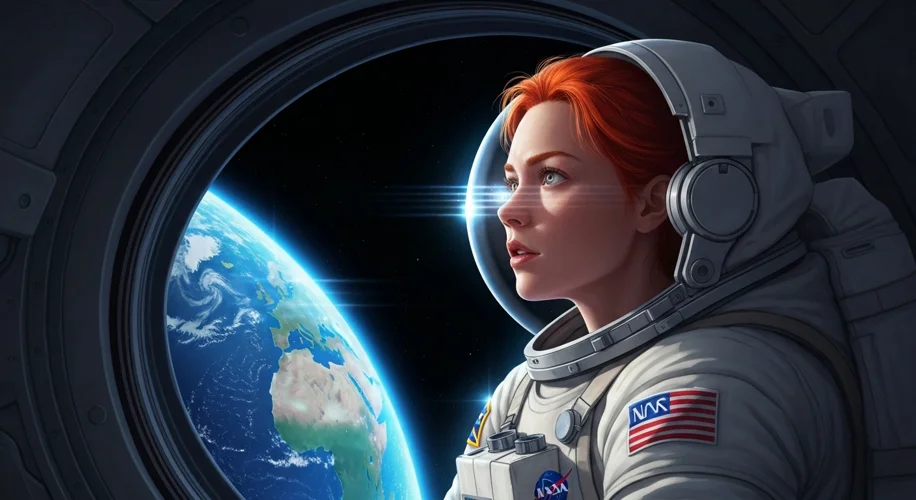Ever wondered what it’s like to be an astronaut? Beyond the amazing views of Earth, space presents some unique challenges to the human body. One surprising issue? It affects your vision.
As someone who studies our planet’s atmosphere and environment, I’m fascinated by how different conditions impact us. Living in space is an extreme environment, and NASA scientists have been working hard to understand and address its effects on astronauts, especially their eyesight.
Why Does Space Mess With Vision?
When astronauts spend time in microgravity – that feeling of weightlessness – fluids in their bodies shift. Normally, gravity helps keep fluids distributed, but in space, they move upwards towards the head. This can increase pressure inside the skull, which can then affect the shape of the eyeball and the optic nerve. Think of it like a gentle, constant pressure.
Astronauts often report changes like farsightedness (difficulty seeing close up), a slightly flattened eyeball, and sometimes swelling of the optic nerve. These changes are often referred to as Spaceflight Associated Neuro-ocular Syndrome, or SANS.
It’s not just a minor inconvenience; it’s something NASA takes very seriously. Good vision is crucial for performing complex tasks, from piloting spacecraft to conducting scientific experiments. For longer missions, like potential trips to Mars, understanding and mitigating these vision changes is absolutely critical.
NASA’s Solutions in the Works
So, what is NASA doing about it? They’re employing a multi-pronged approach:
- Advanced Monitoring: Astronauts undergo thorough eye exams before, during, and after their missions. This includes sophisticated imaging techniques to track any changes in the eye’s structure and the optic nerve.
- Countermeasures: Researchers are exploring ways to counteract the fluid shift. This could involve special suits that create a slight vacuum at the lower body, gently pulling fluids back down. Think of it as a reverse of the upward fluid shift.
- Lifestyle Adjustments: Even small changes in diet or exercise routines are being studied for their potential impact.
- Understanding the ‘Why’: A huge part of the work is simply gaining a deeper scientific understanding of the exact mechanisms at play. By studying astronauts and even using ground-based simulations, scientists are piecing together the puzzle.
It’s a testament to human ingenuity and our drive to explore. We face challenges, we study them, and we innovate to overcome them. The work NASA is doing to protect astronaut vision is a perfect example of how science and technology work hand-in-hand to push the boundaries of what’s possible.
It reminds me that adapting to new environments, whether it’s the vacuum of space or changing conditions here on Earth, requires careful observation, dedicated research, and a commitment to finding solutions. And in this case, the goal is to ensure our explorers can see clearly, both near and far, as they venture into the cosmos.

